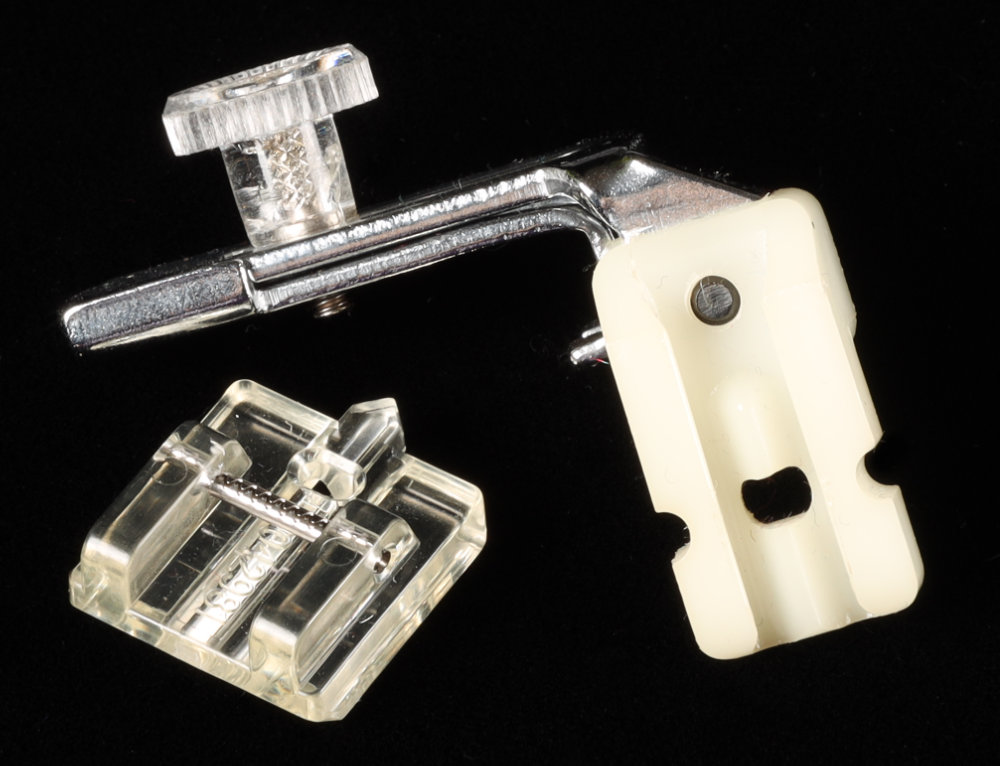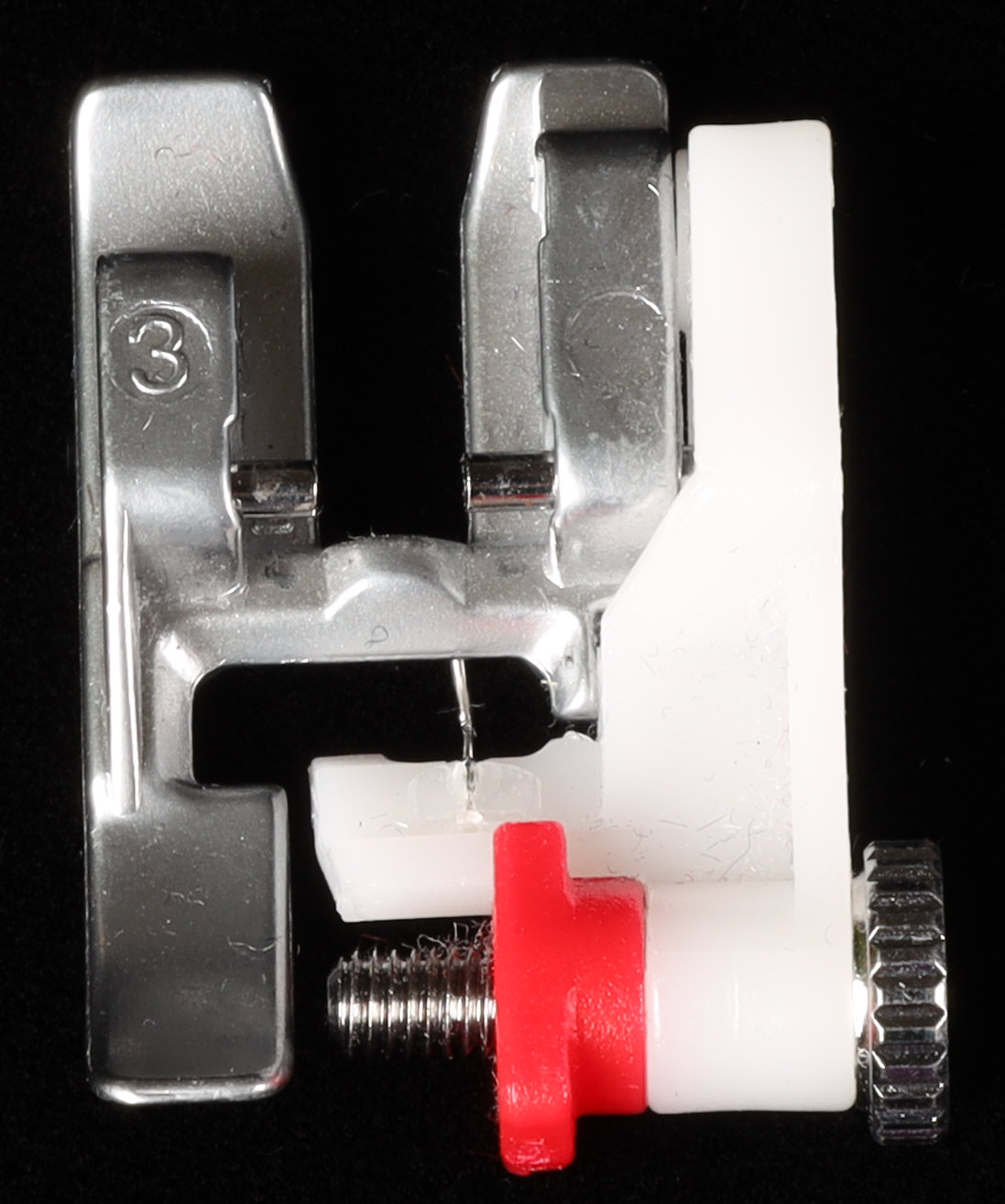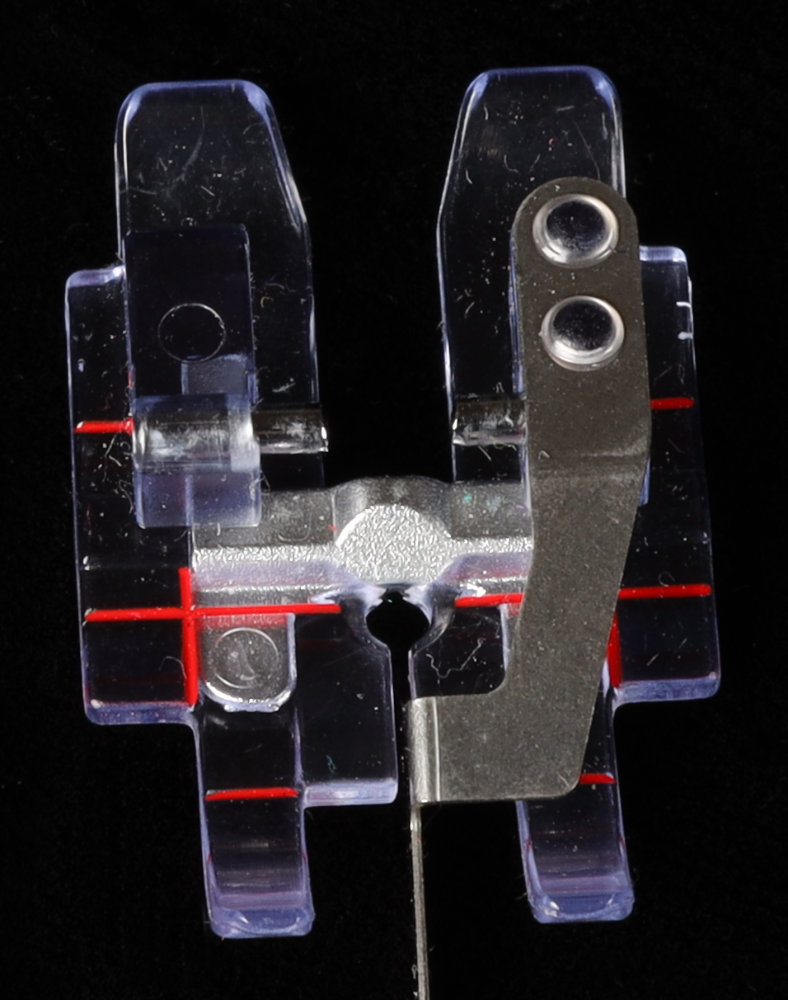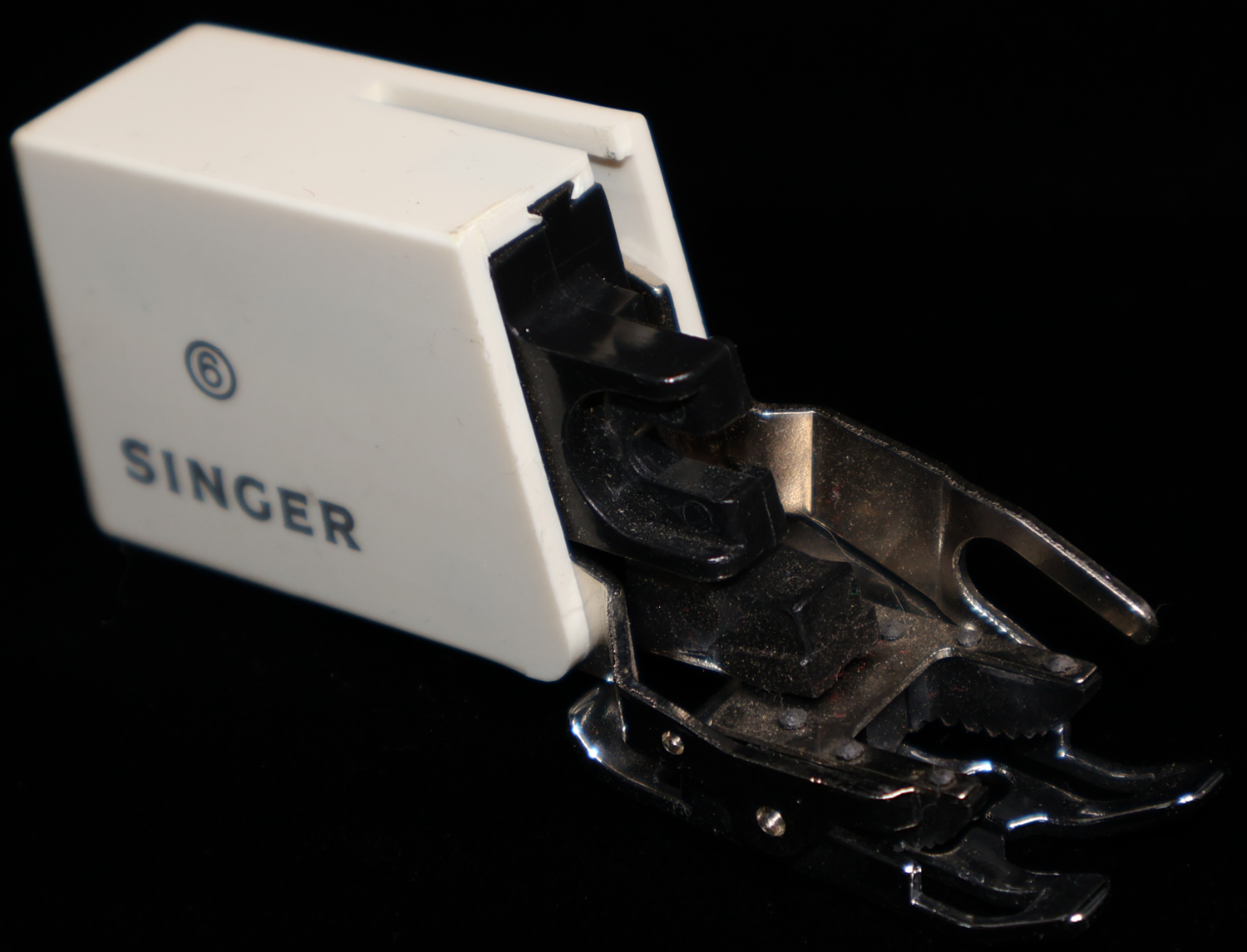When I was a child, I used to play with my mom’s sewing machine attachments. I’d play with all of them, much to her dismay. “Don’t break it!”
When I got my own sewing machine, which was a hand-me-down from my mom. (Actually, I’m pretty sure it is my sister’s first machine.) I was quick to buy an assortment of feet and attachments for it.
The thing is, I don’t really use all of the feet that I have access to. But some of them are really cool.
Most machines come with a pretty standard set of feet. For example, you probably got a regular “zig-zag” foot and some sort of zipper foot with your machine.
Some machines come with some extra ones. And most manufacturers sell extra feet for machines. And quite a few machines take universal feet (even if the manufacturer doesn’t come right out and let you know that they do).
Here are a few of the super cool feet you might be able to get for your machine. (You don’t NEED any of these feet, but you might enjoy using them.)
Invisible Zipper Foot
The invisible zipper foot is made specifically to install invisible zippers.
Unlike regular zippers, the invisible zipper’s teeth curl to the wrong side of the zipper, and this foot is made to allow the teeth of the zipper to sit in a groove as you sew. This keeps the teeth away from the needle and allows you to sew really close to the teeth without sewing on the teeth making the zipper not work correctly.
You don’t need it. In fact, in my zipper sewing ebook, I show how to sew an invisible zipper without the special foot. The procedure is the same, mostly, but there are parts you can’t sew with the invisible zipper foot and still need a regular zipper foot to sew.
But, if you sew a lot of invisible zippers (or want to), you might consider purchasing one of these because it will make sewing next to the teeth easier and less problematic.

Invisible Hem Foot
And, if you have the foot, it’s even easier.
The invisible hem stitch is a type of stitch that is kinda like a weird looking zig-zag. But when the needle jumps to the left, it needs to only pick up a little bit of a fold of fabric. So it’s important that the fabric is positioned so that this can happen consistently and without “error”.
The invisible hem foot allows you to line up your fabric fold with the left needle position.
Mine also allows me to sew a perfect 1/4” seam allowance with an overlock stitch.

Stitch in the Ditch Foot
The special stitch in the ditch foot has a little blade that runs along the front of the foot at exactly where the needle is (on a straight stitch that hasn’t been moved side to side).
This way, you can run that blade right down the ditch you need to stitch in.
And you can use this for any application where you want to stitch right at a position. or, you can move the needle over and use the blade as some what of a guide. (Like if you are top stitching or edge stitching and need some extra guidance for stitch line placement.

Rolled Hem Foot
The rolled hem foot allows you to use the foot to make a specific width rolled hem. Therefore, for each hem width, you’ll need a different foot.
They are also going to be more useful on pieces that are flat, not sewn in the round. Otherwise, you’ll have the part where you start and stop the hem to sew with a different foot, or not using the rolled hem foot.
I have this listed here because I have some, and I think they are pretty neat.
They will be more useful for fabrics that you can’t press a good crease into, or for hem widths that are too small to press.
However, I never use them.
Though, to be fair, I rarely sew rolled hems that aren’t pressed.

Walking Foot
When you look at your machine, you’ll notice the feed dogs, the ridged metal parts, that sit under the foot. The job of the feed dogs is to pull the fabric through the machine at the rate (stitches per inch) that you have set on your machine.
The catch is that the top layer of fabric is not being pulled by the feed dogs, only the bottom is. So, this can result in some unfortunate outcomes.
The walking foot is meant to replicate feed dogs on the top side of the fabric.
Some machines (like my Pfaff) have an integrated system that does this job.
And there are techniques to use to prevent the issues that arise from having feed dogs only on the bottom.
But, this is a super cool foot that you might find useful in your arsenal.

Wrap Up
Your machine may come with some standard feet. But there are a bunch of specialty feet out there waiting for you to try them.
Some are useful. Though, you don’t need any of them.
Pick and choose what you need for your sewing style.
Explore Sewing Projects at Your Own Pace
Learn helpful techniques and tips to make sewing more enjoyable.
